- Joined
- May 7, 2013
- Messages
- 457
- Reaction score
- 177
Usual disclaimer applied: do this at your own risk, wear safety glasses, ..., blah.... blah....
I have a Roland FR-1xb. I prefer the acoustic sound but oftentimes I dont want to bother other people. The Roland is used solely for the purpose of practice in silence.
One of the annoying thing about the FR-1xb is that it does not have bellows pad. Im not sure I understand why Roland wants to save a few $ for this $2000 instrument. So I bought one from eBay and installed it:
center>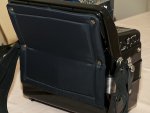
OK. It looks and feels good. But another annoying thing about electronic instruments is that they need batteries. Since I dont use the Roland very often, many times 10 minutes into playing, the batteries go low. I find myself untrapping the accordion from my body, going out to the garage to fetch a set of battery from the charger, .... Now there is another thing to do: I have do remove the bellows pad to access the battery door.
I have to find a way to charge the batteries inside the accordion.
So I open up the grill by undoing 4 screws:
center>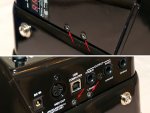
Once the grill is removed, I find a perfect location for the charging jack:
center>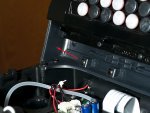
The jact is a coaxial power jack, panel-mount, size M (Radio Shack part #274-1582). Here it is, installed in the accordion:
center>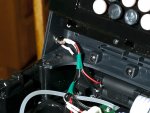
And heres the result:
center>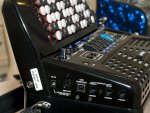
To prevent possible damage to the accordion, when the charger is plugged into the jack, the batteries are disconnected from the accordion. Power from the charger goes only to the batteries, not to the accordion. In other words, the accordion does not have battery power when the charger is plugged in.
The charger I use is a smart charger by Ansmann, model ACS 410. Model ACS 110 Traveller is also a good one.
center>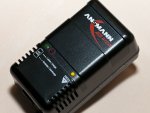
Now once a week, I just plug in the charger and unplug whenever I remember. If I dont remember to unplug, theres little harm done. The smart charger will automatically switch to trickle charge when the batteries are full.
I realize that is not as optimal as charging each battery cell individually. But Im willing to make the trade-off for conveniences sake.
I have a Roland FR-1xb. I prefer the acoustic sound but oftentimes I dont want to bother other people. The Roland is used solely for the purpose of practice in silence.
One of the annoying thing about the FR-1xb is that it does not have bellows pad. Im not sure I understand why Roland wants to save a few $ for this $2000 instrument. So I bought one from eBay and installed it:
center>

OK. It looks and feels good. But another annoying thing about electronic instruments is that they need batteries. Since I dont use the Roland very often, many times 10 minutes into playing, the batteries go low. I find myself untrapping the accordion from my body, going out to the garage to fetch a set of battery from the charger, .... Now there is another thing to do: I have do remove the bellows pad to access the battery door.
I have to find a way to charge the batteries inside the accordion.
So I open up the grill by undoing 4 screws:
center>

Once the grill is removed, I find a perfect location for the charging jack:
center>

The jact is a coaxial power jack, panel-mount, size M (Radio Shack part #274-1582). Here it is, installed in the accordion:
center>

And heres the result:
center>

To prevent possible damage to the accordion, when the charger is plugged into the jack, the batteries are disconnected from the accordion. Power from the charger goes only to the batteries, not to the accordion. In other words, the accordion does not have battery power when the charger is plugged in.
The charger I use is a smart charger by Ansmann, model ACS 410. Model ACS 110 Traveller is also a good one.
center>

Now once a week, I just plug in the charger and unplug whenever I remember. If I dont remember to unplug, theres little harm done. The smart charger will automatically switch to trickle charge when the batteries are full.
I realize that is not as optimal as charging each battery cell individually. But Im willing to make the trade-off for conveniences sake.
